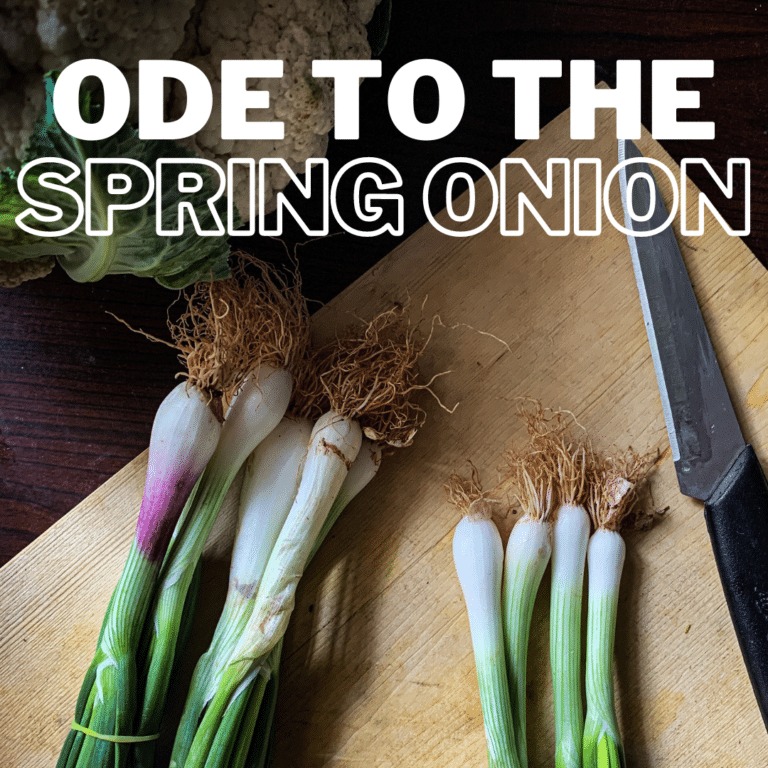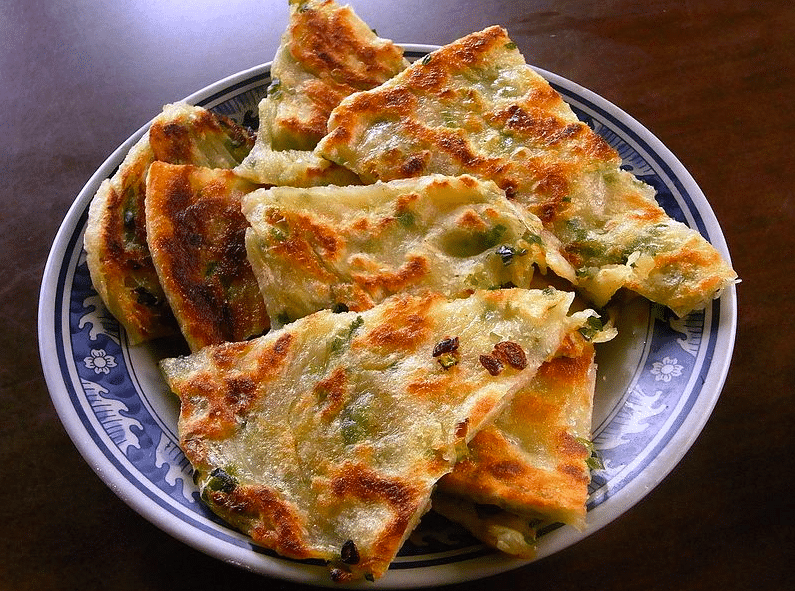A slender stalk of green and white,
A pungent scent, a crisp delight,
Mild and sweet, yet full of flavour.
Oh Spring Onion, a culinary saviour!
We love spring onions here at Kitche and we are not the only ones. They are a hugely popular ingredient in many dishes around the world. Not only are they delicious, but they also have a number of health benefits, making them a great addition to any diet.
While many people buy them, very few people eat the entire plant from top to bottom which means a large portion of the onion ends up in the bin! Both the white and green parts are entirely edible and bring something different to the meal. The bulb (white bit) is milder in flavour than a regular onion, making it perfect for dishes where you want a hint of onion flavour without it being too overpowering. The leafy green bits are great for adding a pop of colour and freshness to dishes and can be used in everything from salads to soups.
Unlike our friends the white and red onion, spring onions can be eaten raw!
How to store them?
While we love spring onions, they don’t keep for very long so it is important that you store them correctly. No one likes them slimy!
- Cut off the roots, give them a wash to get rid of the debris and dab them dry afterwards
- Wrap the spring onions in damp paper or kitchen towel
- Put them in an airtight plastic bag or container
- Put them in the refrigerator, somewhere visible and use within a week!
Regrowing spring onions
Did you know you can regrow spring onions? It is a simple and fun way to save money and reduce food waste.
Here are the steps:
- Cut the green part of the spring onions off, leaving about an inch of the white part attached to the roots.
- Place the white part with the roots in a jar or glass of water, with the roots submerged.
- Change the water every day or every other day, and make sure the roots stay submerged.
- Place the jar or glass in a sunny spot, such as a windowsill or balcony.
- After a few days, you should start to see new growth from the top of the white part.
- Once the new growth reaches a few inches in length, you can either continue to grow them in water or plant them in soil.
- To plant them in soil, prepare a pot with well-draining soil and plant the onion, making sure to cover the roots with soil. Water the plant regularly and keep it in a sunny spot.
- Harvest the new growth as needed and enjoy your freshly regrown spring onions!
Note: Spring onions may not regrow indefinitely, so it’s a good idea to start with fresh ones every once in a while.
Spring onion-centred recipes
While spring onions are often seen as a garnish or the last edition, here are some spring super simple onion-centred recipes for you to try this spring:
- Spring Onion Pancakes – Mix together flour, salt, water, and chopped spring onion greens to create a dough. Roll the dough out into thin pancakes and fry them in a pan until golden brown. Serve with a dipping sauce made from soy sauce, rice vinegar, and more chopped spring onion greens.
- Creamy Spring Onion Soup – Sauté chopped spring onion bulbs and garlic in a pot until softened. Add vegetable stock and bring to a boil, then reduce heat and simmer for 20 minutes. Puree the soup until smooth, then stir in cream and chopped spring onion greens. Season with salt and pepper to taste.
As you can see spring onions are a versatile and delicious ingredient that can be easily regrown and used in a variety of dishes. Don’t be afraid to use the entire plant, from the bulb to the greens, for maximum flavour and nutrition. Try out some of the recipe examples above and discover how amazing spring onions can be!



